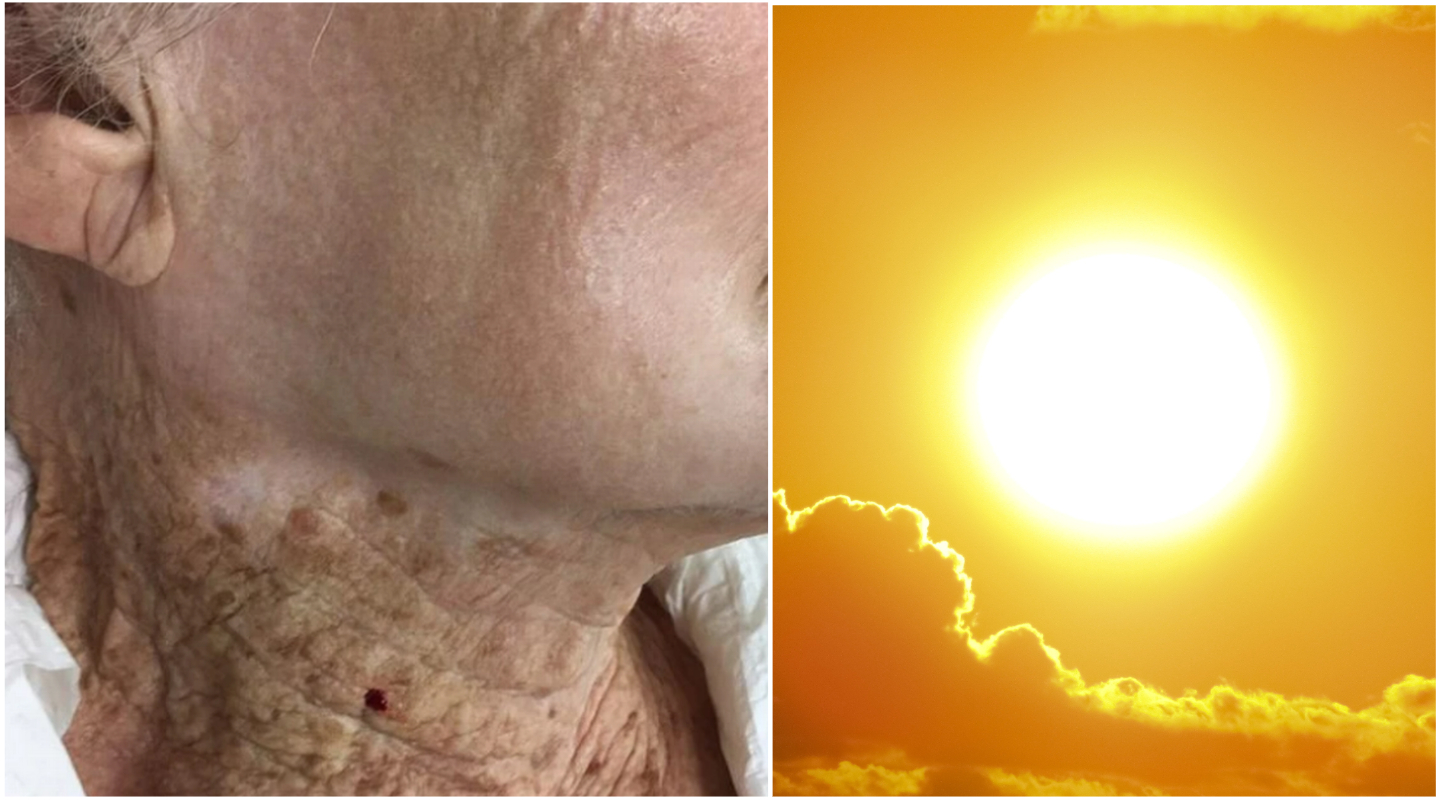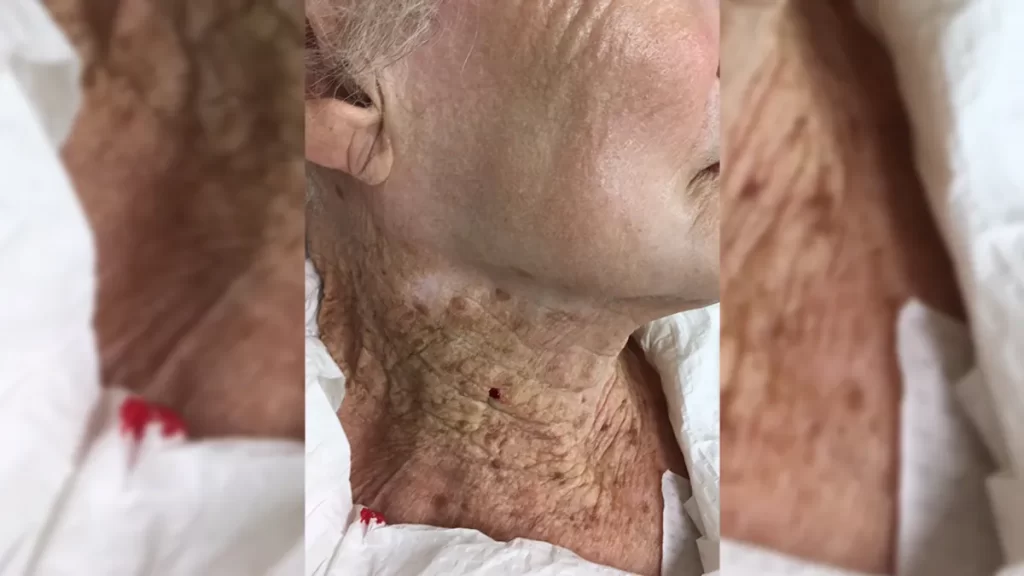Health
This Woman Wore Sunscreen On Her Face But Not Neck For 40 Years, And This Is The Result
It’s possible that it’s time to expand your skin care routine to include the area below your neckline.

The sun has the ability to have a disastrous impact on skin, having the capacity to harm our cells, which may lead to certain malignancies.
Luckily, as a species, we have evolved to the point where we have the intelligence to develop creams that are capable of blocking out the majority of the harmful radiation; however, how effective are these creams? Extremely, as seen by the face and neck of a 92-year-old individual.
The photograph, which depicts the face and neck of a 92-year-old woman, was published in the Journal of The European Academy of Dermatology and Venereology.

The photograph, which depicts the face and neck of a 92-year-old woman, was published in the Journal of The European Academy of Dermatology and Venereology. According to the study, the woman only applied UV-protective moisturizer to her face, but she neglected to apply any to her neck. The end result is a noticeable and significant change in UV damage and degradation to the skin.
Because ultraviolet (UV) radiation from the sun may penetrate the layers of our skin and cause damage to our cells, prolonged exposure to the sun has been linked to premature aging of the skin.
Skin aging as a natural consequence of getting older is referred to as chronological aging, but getting older as a consequence of sun exposure is referred to as photoaging, IFLS notes.
The skin is a nearly one-of-a-kind organ in that it is immediately impacted by exposure to the environment, particularly the ultraviolet (UV) radiation from the sun.
The upshot of this may be that parts of our body that are exposed to the environment on a more continuous basis, such as our face, neck, arms, and hands, can seem older in comparison to parts of our body that are often covered, such as our trunk.
Sun exposure may cause damage to the DNA in skin cells, which can accumulate over time, raising the likelihood of genetic abnormalities developing, which can lead to cancer. This is in addition to the fact that sun exposure can make the skin seem older. When it relates to the sun, this is why cancer and becoming older go hand in hand with each other.
Dr. Christian Posch, who specializes in the study of skin cancer, argues that the similarities between aging and the risk of cancer illustrate that if we treat the indicators of aging, we can, presumably, also reduce the likelihood of disease.
“While it is unlikely that we can (or even should) aim at defeating human ageing for various reasons, modifiers of ageing will still be able to change both healthspan (the time we live without disease) and lifespan,” writes Posch. “After all, who would not agree to an additional 20–40 healthy years?”
“Such advancements will be realized by a significant reduction of age-related diseases including the prevention of cancers. Why? Because there is substantial overlap between the hallmarks of cancer and the hallmarks of ageing. Thus, addressing biological changes of ageing will also address prerequisites of cancerogenesis.”
Because the kind of cell damage that causes a person’s skin to appear older is often the same kind of damage that puts a person at a greater risk of developing cancer, attempting to prevent aging may be analogous to taking preventative measures against skin cancers.
It’s something to think about, for sure.
Typos, corrections and/or news tips? Email us at Contact@TheMindUnleashed.com
